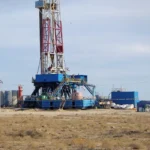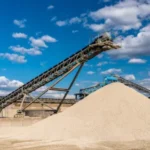The Oil and Gas Industry Outlook 2025: Trends, Services and Strategic Insights

The U.S. oil and gas industry remains one of the strongest pillars of the national economy. It drives both energy security and industrial growth. Going into 2025, the sector faces rapid change. This will be shaped by technological breakthroughs, heightened global energy demand, supply chain reconfigurations and stringent environmental regulations.
Understanding the Oil and Gas Value Chain
The oil and gas value chain spans three primary sectors: upstream, midstream, and downstream, each critical for better energy flows safely from reservoirs to consumers.
Upstream
Upstream involves exploration and production (E&P). Companies locate reserves, drill wells, and bring hydrocarbons to the surface. Services such as cementing, fracturing, acidizing and remediation guarantee wells are drilled safely and maintain long-term productivity.
According to Deloitte, upstream capital expenditures have risen by 53% in the past four years, while net profits increased by 16%, reflecting strong capital discipline and efficiency gains. The United States remains the world’s largest oil and gas producer, with the Permian Basin alone accounting for 48% of national crude production and an annual increase of around 270,000 barrels per day.
Unconventional shale E&P has also made the US the lead growth driver for global supply, while Middle Eastern national oil companies are expanding hydrocarbon capacity, ADNOC targeting 5 million barrels/day output by 2027.
Midstream
Next, hydrocarbons move into transportation, storage, and initial processing. This includes pipelines, tankers, transloading facilities, and treatment plants. Midstream acts as the connector between production fields and end markets, making its stability crucial for uninterrupted energy supply.
Global crude oil pipeline capacity exceeds 95 million barrels per day, with the United States alone operating more than 190,000 miles of liquid petroleum pipelines. Natural gas midstream has grown rapidly, with US LNG export capacity surpassing 14 Bcf/d in 2024 and projected demand from data centers adding an additional 3 Bcf/d by 2030.
The importance of midstream resilience has been highlighted by geopolitical disruptions, with chokepoints such as the Strait of Hormuz handling nearly 21% of global petroleum liquids.
Downstream
In downstream operations, hydrocarbons become end-use products. This includes refining crude oil into gasoline, diesel, and petrochemicals, as well as marketing and distribution through retail outlets, terminals, and gas stations.
Meanwhile, renewable fuels and petrochemicals are transforming the downstream sector: global petrochemicals already account for over 14% of oil demand, with a projected rise to 18–20% by 2040.
On the retail side, the USA operates over 1,50,000 fuel stations, with increasing integration of digital services over 53% of retailers now deploying or considering connected car payment solutions.
Companies are also blending biofuels (ethanol, renewable diesel and biodiesel) and integrating hydrogen refueling points to align with policy mandates, such as the EU’s 2% sustainable aviation fuel mandate from 2025.
U.S. Oil and Gas Industry: Where We Stand in 2024
As of early 2024, the United States leads global oil production at 12.9 million barrels per day (EIA). The Permian Basin continues to dominate overall growth, while LNG exports from the Gulf Coast are increasing steadily, setting the stage for significant gains in 2025.
Market Indicators heading into 2025:
- Forecasted U.S. oil production growth: 3 – 5%
- Rising natural gas demand, particularly in LNG exports
- Upstream capital expenditure expected growth: 7–10%
- Strong domestic infrastructure investment in midstream logistics
After years of downturn, the oilfield services (OFS) sector has dramatically rebounded. Having lost $155 billion between 2015 – 2021, OFS firms generated over $50 billion in profits within the last three years, supported by innovation and disciplined cost strategies.
Oil and Gas Industry Outlook 2025: Key Trends
1. Operational Efficiency Becomes First Priority
With sustained price volatility and shrinking margins, operators are prioritizing operational efficiency. Demand is rising for chemical technologies that improve flow, reduce formation damage and optimize water usage, making efficiency-focused service providers indispensable.
2. Decarbonization and ESG Compliance
Methane emissions face growing regulatory oversight. ESG compliance now favors solutions based on low-toxicity, environmentally responsible additives. Service providers offering reduced-risk chemistry are gaining traction with operators seeking sustainable operations.
3. Digital and Data-Driven Field Solutions
The integration of digital monitoring, automation, and smart chemicals is accelerating. Field solutions that deliver real-time analytics, rapid formulation and precision chemical delivery offer operators a competitive edge in both performance and risk mitigation.
4. Localized and Agile Supply Chains
Geopolitical uncertainty is pushing U.S. operators to rely more on domestic suppliers. Agile supply partners such as Sunita USA, with capabilities in blending, bulk delivery and transloading, are pivotal in reducing dependency on overseas logistics and ensuring operational continuity.
5. Strategic Mergers and Acquisitions Activity
Mergers and acquisitions (M&A) are anticipated to remain active in 2025, driven by several factors. These include the positive outlook for medium-term oil and gas prices, ongoing pursuit of cost efficiencies through consolidation and companies’ strong balance sheets offering the capacity to finance acquisitions.
The easing of regulatory hurdles and potential interest rate cuts are also likely to encourage deal-making.
Key Services Supporting Oil and Gas Operations in 2025
1. Well Construction Support
Successful well operations rely on specialized additives that reduce fluid loss, stabilize slurries, and improve friction reduction. Applications include cementing, coiled tubing, and circulation control. Tailored chemical packages lower costs while ensuring zonal isolation and long-term well integrity.
2. Stimulation and Acidizing Solutions
Acid stimulation remains essential to clean and improve well productivity, particularly in shale plays. Effective chemical packages incorporate acid gelling agents, iron and scale inhibitors and corrosion protectants. These ensure enhanced recovery while safeguarding reservoir integrity.
3. Remediation and Water Shutoff
As wells age, remediation becomes crucial. Services such as water control, fines stabilization, sand control and proppant consolidation extend asset life and minimize costly rework. This provides operators cost-efficient means to maximize output.
4. Logistics and Transloading Services
Chemical logistics are a vital part of maintaining continuous operations. Services including bulk transport, dry powder handling, toll blending, and batch production ensure field reliability. By preventing stockouts and delays, effective logistics amplify the value of specialty formulations.
Expert Perspective: Why Chemical Services Matter in 2025
SLB acquired Champion X for $7.8 billion, and Nabors purchased Parker Wellbore. These moves are aimed at completing technology portfolios and stabilizing revenues.
With stronger balance sheets, less reliance on high debt, and demand from upstream megamergers, OFS is entering 2025 with its most favorable conditions in decades.
Industry experts affirm that formulations alone aren’t enough, execution is equally vital. Strong technical expertise, responsive service, and seamless logistics determine whether chemical solutions deliver true ROI.
In the context of horizontal shale wells, LNG terminals, and large midstream hubs, choosing partners like Sunita Hydrocolloids who understand both chemistry and field dynamics makes a tangible difference in outcomes.
With President-elect Trump signaling priorities of energy independence and lower costs, policy shifts could include streamlined permitting, lifted LNG export restrictions, and expanded hydrocarbon development. This could increase short-term supply but raise global uncertainty.
Final Thoughts: Preparing for the Future
The U.S. oil and gas sector enters 2025 with robust momentum, but higher performance expectations and new sustainability frameworks demand partners who can deliver more than just products.
At the same time, shale operators are pivoting toward Tier 2 and Tier 3 acreage. Innovations such as refracturing, enhanced oil recovery, and water reuse (now cheaper than disposal) are expected to lift returns.
Sunita Hydrocolloids remains committed to supporting upstream and midstream operators by blending technical expertise with agile field solutions. Explore their product catalog to see how they help operators prepare for the challenges and opportunities ahead.
Let’s Talk
Ready to streamline your 2025 operations? Sunita Hydrocolloids offers custom blending, on-site delivery, remediation expertise, and logistics support tailored to your project needs. Connect with the Sunita USA team today to discuss how their solutions can help maximize well performance and ensure uninterrupted operational success.





